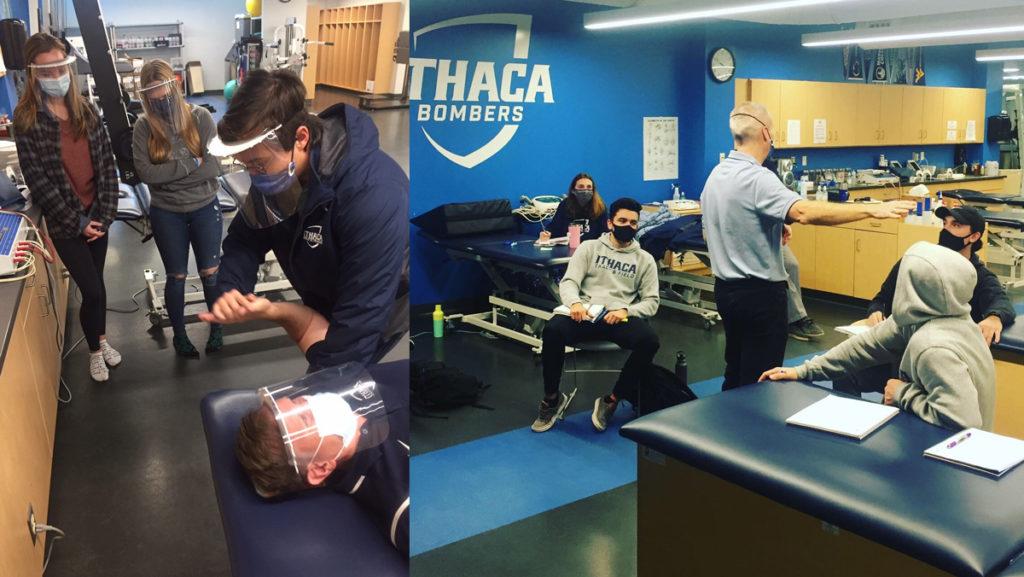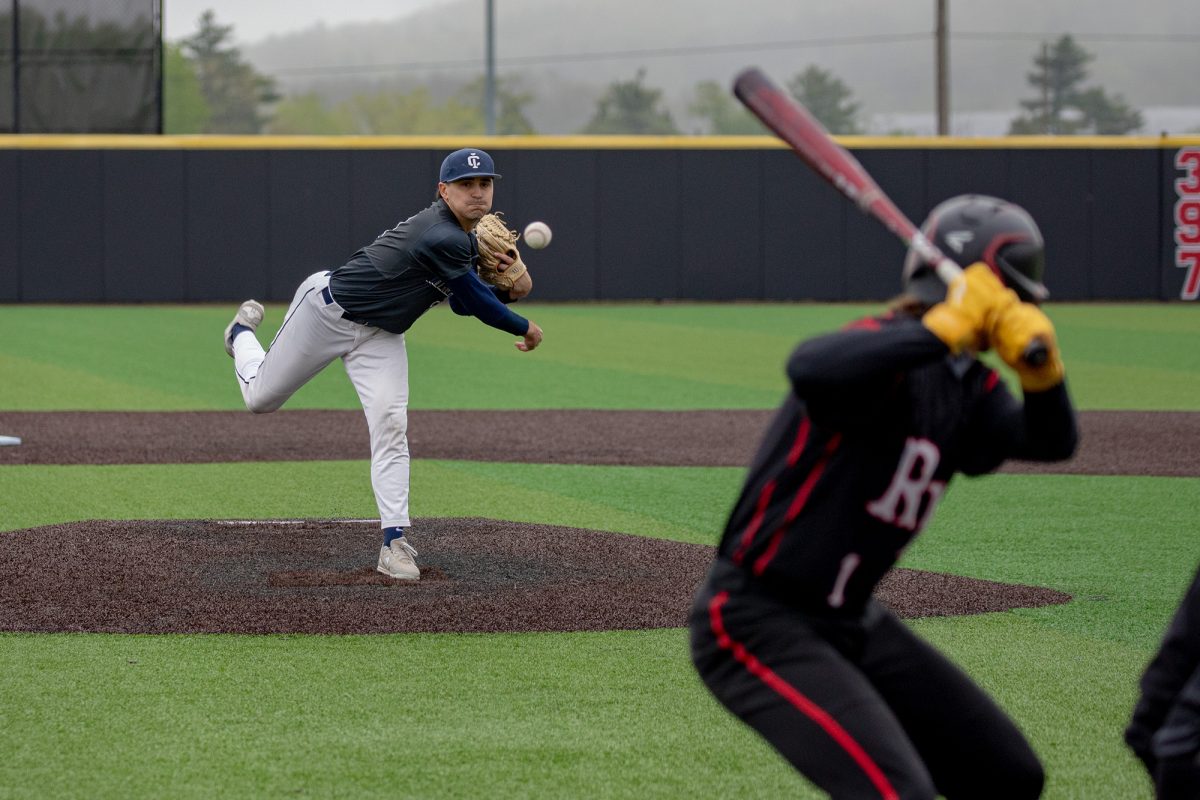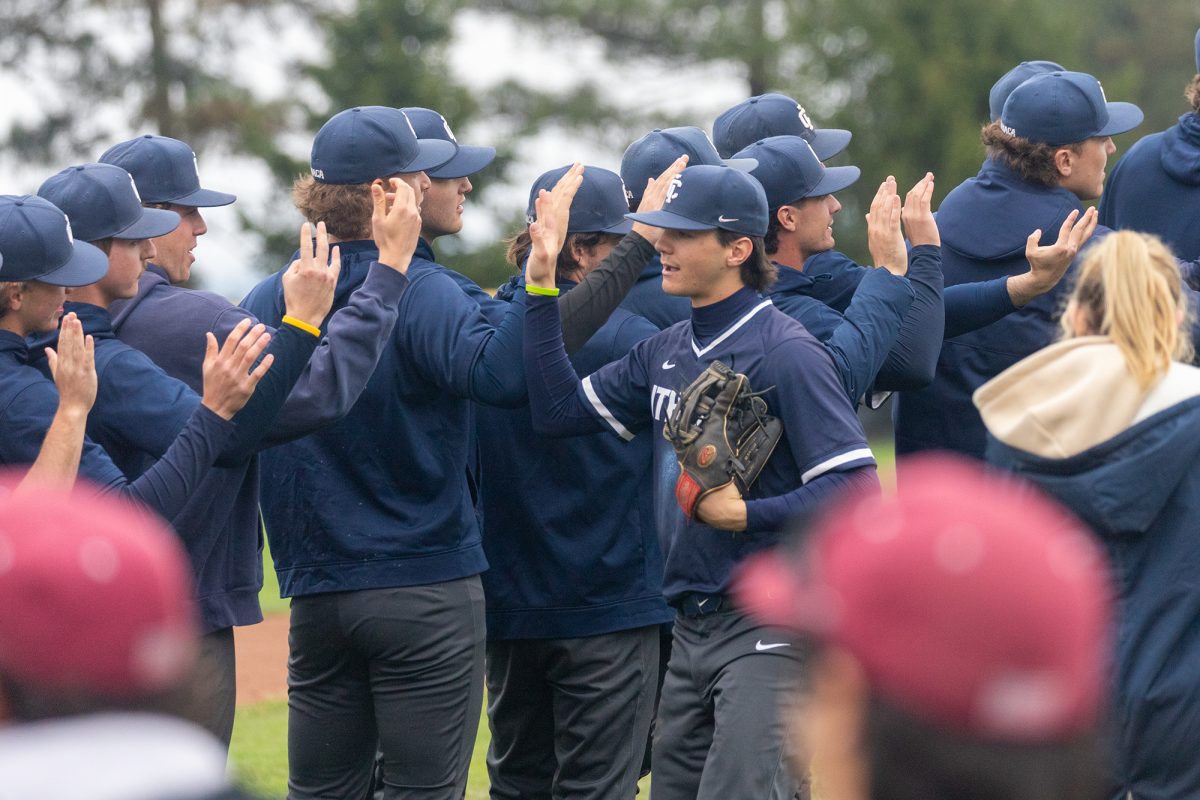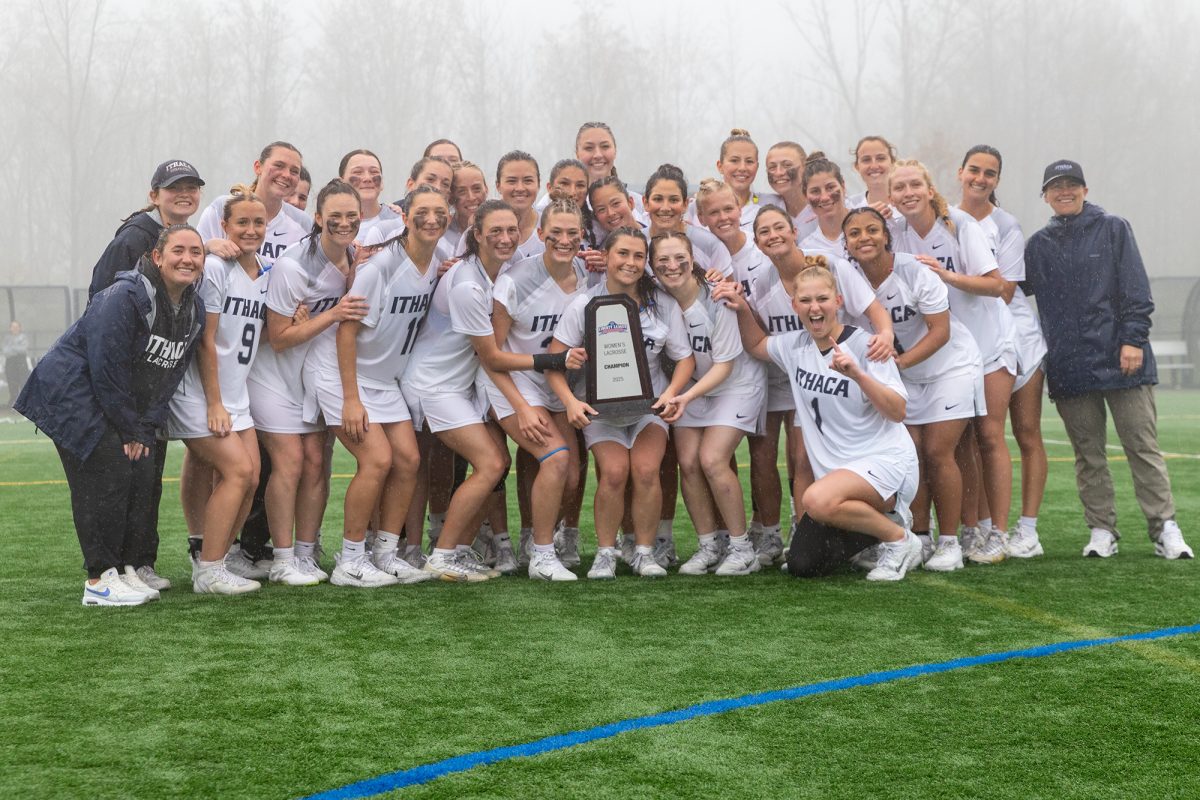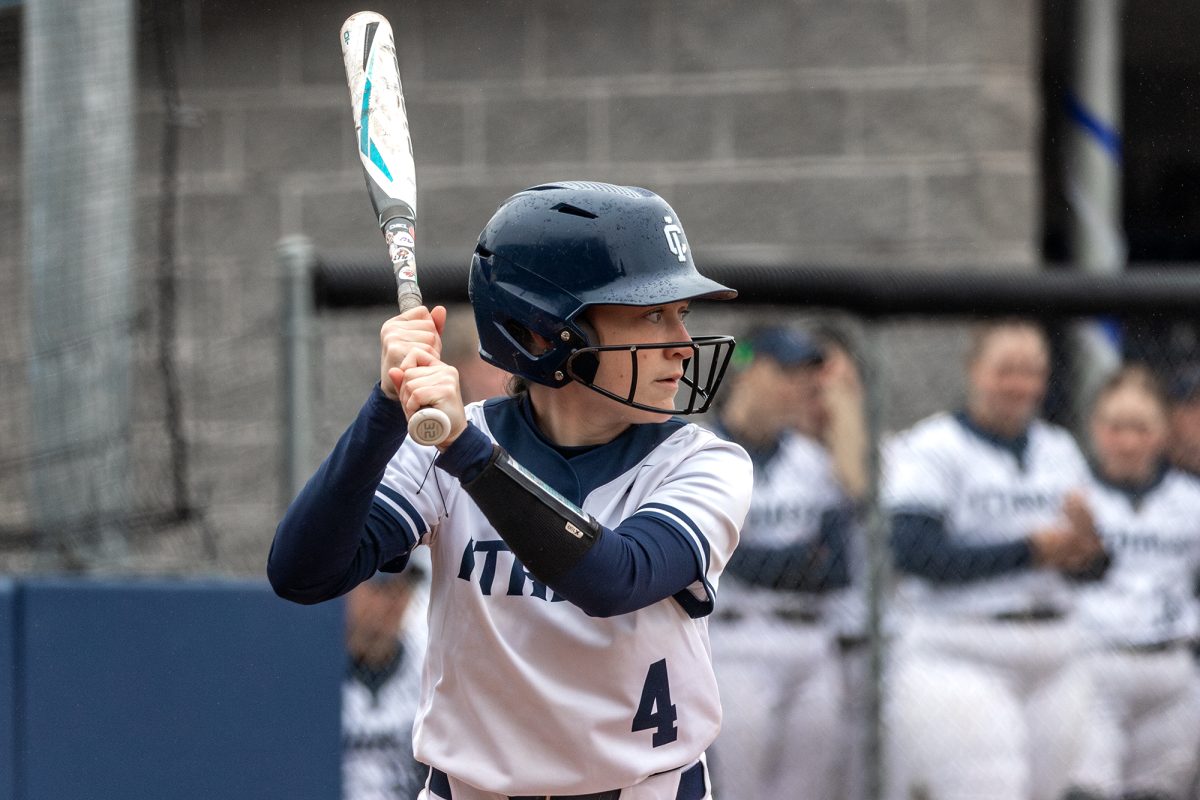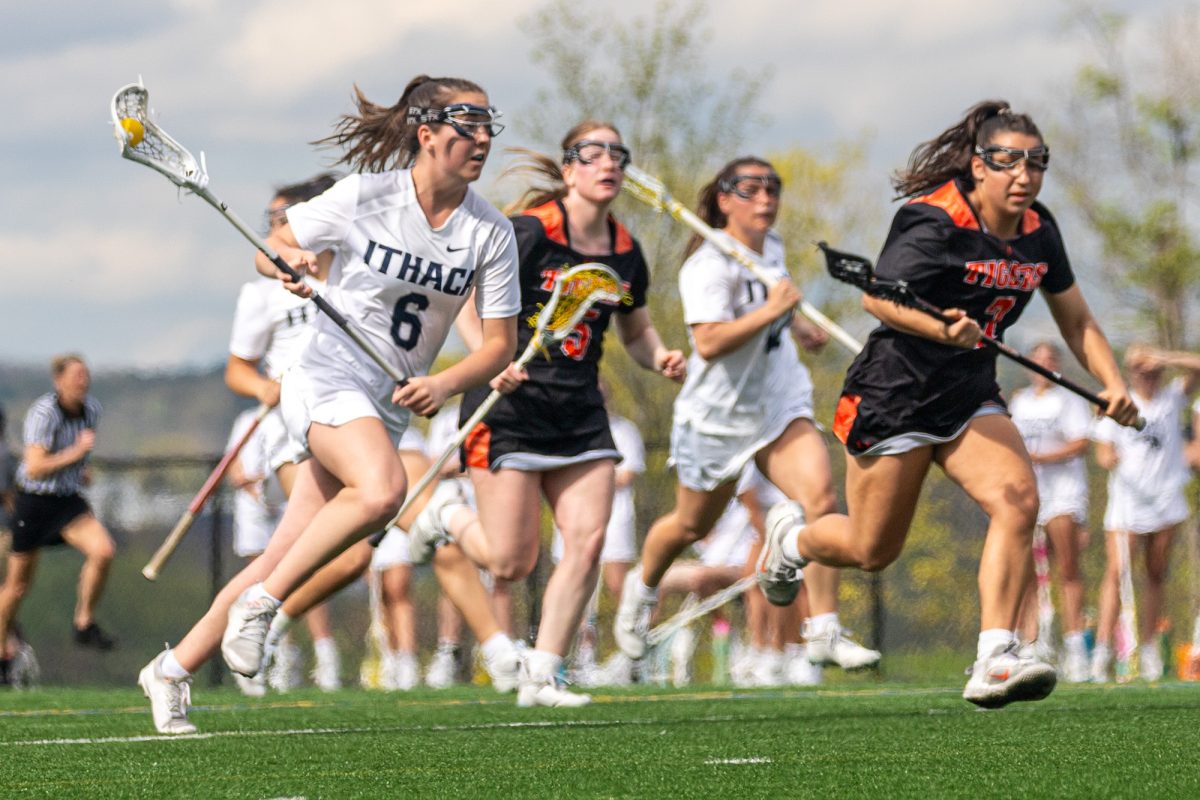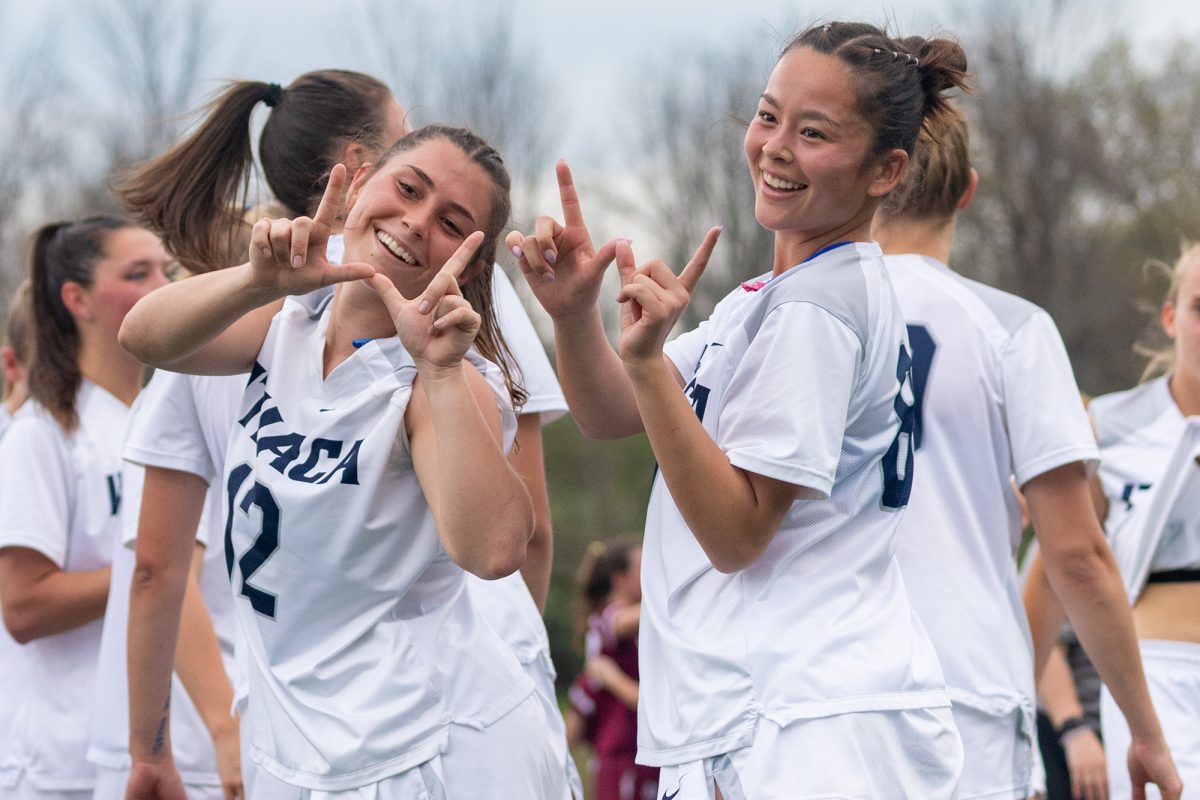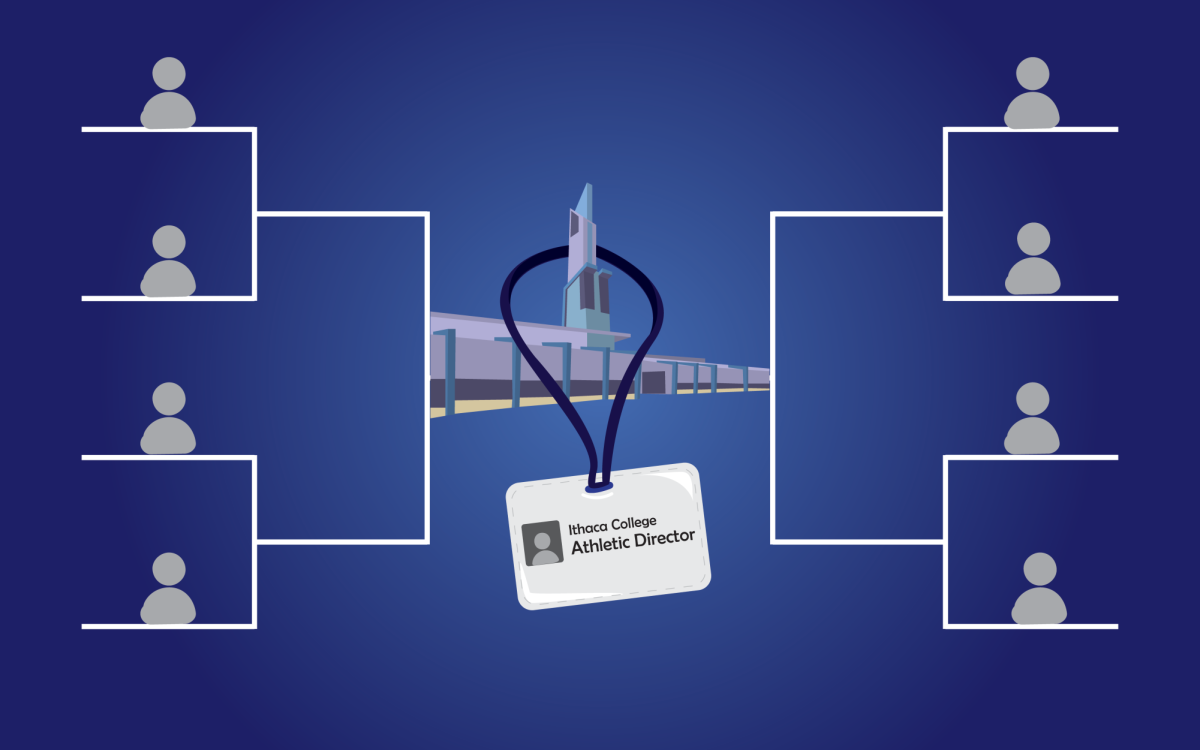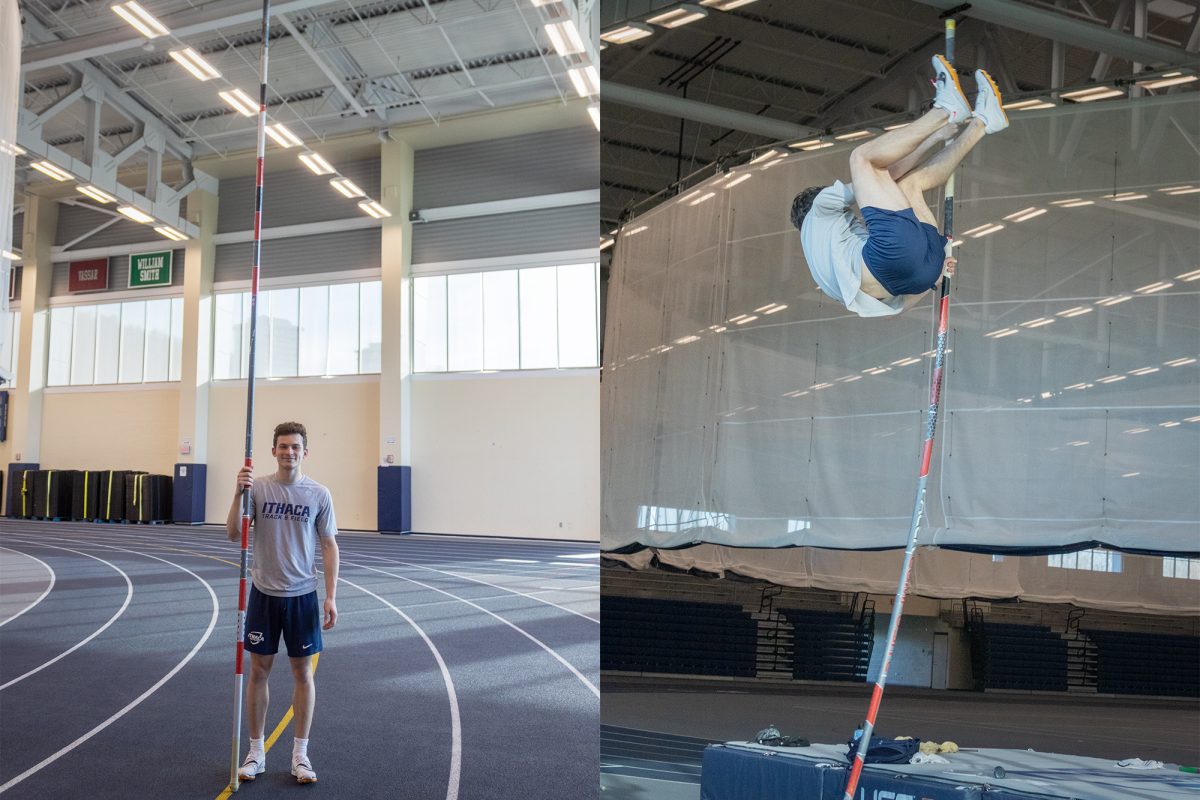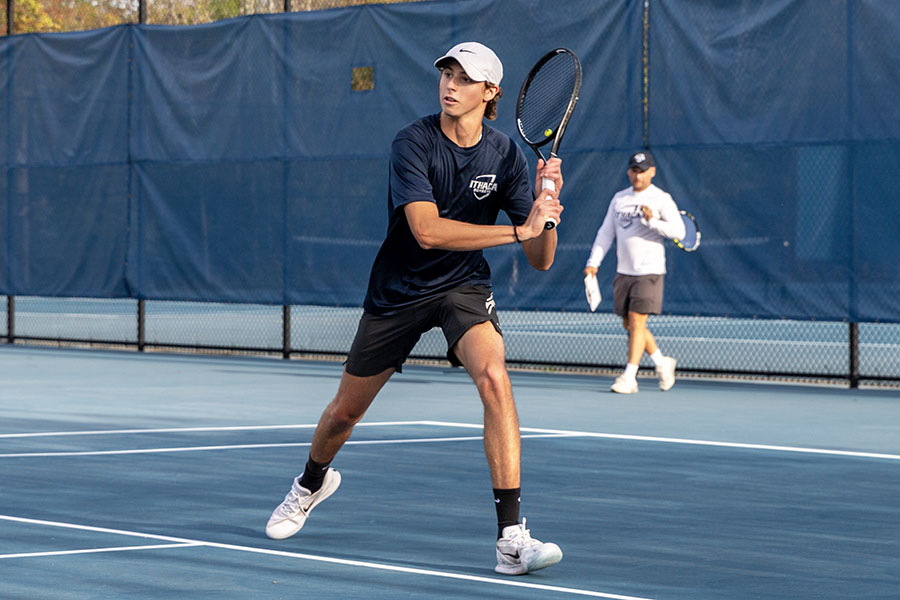Fall at Ithaca College usually consists of fan-filled bleachers at Carp Wood Field, intense rivalry at Butterfield Stadium and nail-biting buzzer–beaters at Higgins Stadium. However, this fall has looked different. The ongoing COVID-19 pandemic has left not only the stadiums and fields empty but the athletic training rooms too. Without athletes on campus, the college’s athletic training program built the Patientless Clinical Education Program.
Paul Geisler, professor and program director in the Department of Exercise Science and Athletic Training, said this program consists of two parts that include clinical pods and a virtual preceptor program. The virtual preceptor program is a new method that Geisler created for the program this semester. A group of 28 alumni became virtual preceptors, and every student was matched with a preceptor who matched their career goals.
“It is a very crucial issue,” Geisler said. “One of the biggest teaching challenges right now is trying to deliver the hands-on learning material.”
Although the college chose to continue remote learning in Fall 2020, juniors and seniors who are part of the physical therapy, occupational therapy and athletic training programs are able to attend some in-person classes because of the clinical education requirements that include hands-on work. Underclassmen were not granted an exemption and are completely online in their studies during this semester.
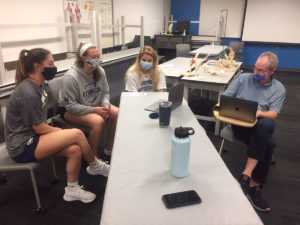
Underclassmen requirements consist of courses more focused on learning information before practicing it in clinicals as upperclassmen. Freshmen and sophomores are taking courses like general anatomy and physics classes online, in addition to major-specific courses including Introduction to Evidence Based Medicine and Clinical Reasoning, Acute Care and Emergency Management in Athletic Training and Athletic Training Techniques I and II.
The in-person classes at the college have strict protocols. Every student wears a mask, a full-face shield and gloves when working in the Hill Center. Geisler said they are required to go through proper sanitation and may only enter and leave class through certain doors. Students and staff members get COVID-19 tests weekly and fill out daily symptom screenings any time they are accessing campus.
Geisler said athletic training students are separated into clinical pods, which are nine groups of three students, that meet six to eight hours a week with a professor or clinician, sometimes live and sometimes virtually.
The virtual preceptors meet online for at least an hour a week, discussing case presentations, policy and position statements, professional growth and other student needs. Geisler said the program has been exciting thus far and potentially may continue in the future.
Senior Alessandro Vecchi has been working with John Dale ’13 as his virtual preceptor. Dale works as the sports medicine residency coordinator at Johns Hopkins University.
“It has been really awesome to work with him because a lot of what he does is rehabilitative stuff,” Vecchi said. “For me, it has been great because that is the area I would like to work on the most, and it has been a perfect match.”
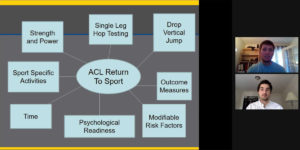
Serving as a preceptor is not a new role for Tara Condon ’16, an athletic trainer and performance coach for the New York City Football Club, as she has worked as one at previous institutions. However, she said that this is her first time being one virtually.
“I usually enjoy the opportunity for hands-on learning,” Condon said via email. “In that type of environment, I can demonstrate, explain and then allow the students to exercise the skill; however, with virtual learning, it was a great challenge to discover the best way to maintain engagement and keep a high level of excitement.”
Condon said that she and the students at the college she works with discuss unique case studies, plan graduate program applications, exam communication strategies and talk about philosophies that she uses to approach sports medicine and sports performance. Condon said that the virtual preceptor program is something she would have found beneficial during her time as a student at the college.
“The athletic training profession is small and young compared to the other medical professionals,” Condon said via email. “It often relies on mentorship and personal connections to help athletic trainers succeed at securing an opportunity. All of my experiences after IC occurred from the connections I made through school, professional conferences, mentorships, etc. Using a virtual program, you increase a students’ ability to be connected to mentors that they would not have had the opportunity if it was only based in New York.”
Even with new ideas and programs being created in the department, not having athletes on campus is a hit to a program that works so closely with them. Junior Caroline Davenport said she feels students are losing crucial parts of the experience in the athletic training major.
“We have to have our hands-on patients in order to learn and understand all the material enough to feel confident enough to be a capable clinician post–graduation,” Davenport said.
Freshman Julia Costa said virtual learning does not include the same hands-on experience athletic training students would gain from in-person studies.
“When it gets to the physical aspects of what an athletic trainer does, you don’t really get the full experience online with the on-the-spot challenges that come up and how to deal with them,” Costa said.
Sophomore Grace Isaksen said she has been utilizing her family and roommates as patients to practice doing special tests on. Special tests are used to assess athlete injuries either at the site of the occurrence or later in the training room. For some of her classes, Isaksen said she has to take videos of her performing assessments and submit them virtually to get feedback from professors.
“I’m really appreciative of how supportive and helpful my professors have been, and I think they’re doing the best they can online, but there’s just a different aspect of being in person,” Isaksen said. “In person, they can be right next to you and ask, ‘Do you feel this?’ They can help you both know how everything is supposed to feel and look right then and there. With video, it is helpful for them to give feedback, but also it can be hard to get the right angles, which then makes it hard for them to be able to see everything that you’re doing.”
Isaksen also added that there have been some positive aspects of studying athletic training online. She said that because she and her peers cannot be in the clinic to learn and practice the special tests, they have been gaining more background knowledge that they would not normally have as much time to cover in person.
Geisler said the college needs to have all athletic training students return to campus for the spring semester in order for them to complete their studies and clinical education.
“It is crucial to get all of our students back on campus, even if there are restrictions, or else our students may not graduate on time,” said Geisler. “If we can continue to bring juniors and seniors back next semester and we can have some real patients, we should be OK based on what we are doing. With that said, I do not think we can afford not to have underclassmen on campus again.”
Geisler said the athletic training program has a plan in place for underclassmen if they do not return to campus for the spring semester. He said a three–credit make-up course would be put in place for the underclassmen to take if there is no in-person spring semester. This course would be part of the college’s program that allows for three free undergraduate credits for students during the winter or summer.
Davenport said that while there has been a lot lost during the pandemic in terms of the way athletic training is being taught, she has gained opportunities that she might not have had otherwise. She said she is currently working on a literature review, which is a form of research conducted in order to compile the best evidence-based medicine for athletes, with her virtual preceptor, Nancy Patterson Flynn B.S. ’06, MS ’08, who is a former assistant athletic trainer for the Los Angeles Dodgers and currently works at Conte Injury Analytics in St. Louis. Davenport said the review compares anterior cruciate ligament (ACL) reconstruction to ACL repair.
“There are a lot of silver linings to this pandemic regarding our program and education,” Davenport said. “We finally have the time to hit the brakes and take a step back to learn and process what we are doing. … Yes, I did lose a season of collegiate football sideline experience, but I have gained so many other positives from this experience to be too upset.”


